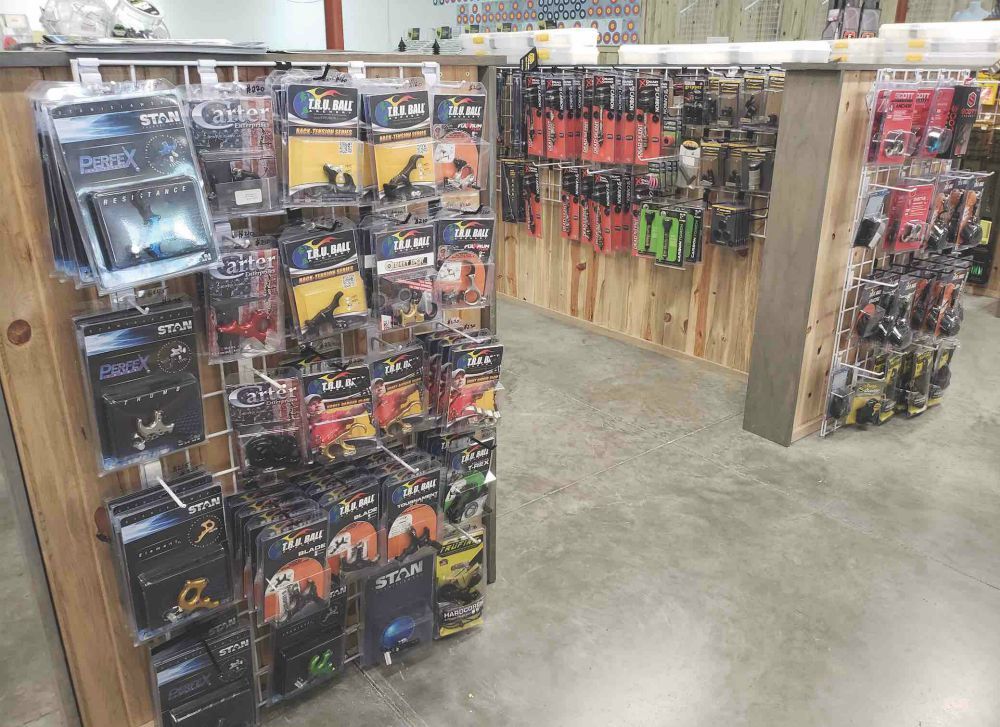Let’s say you do an inventory check on Monday and make orders on Tuesdays each week. This week you notice that you’re best-selling rest is running low and you add it to your next order. The rest company usually delivers product within 2 days, but when you order you are notified that your product won’t be delivered for 10 days. There is no additional information regarding the delay. What do you think is the problem? Stop for a moment and write a sentence or two (or just remember what you’re saying to yourself right now) and we’ll come back to it later in the article.
Customer Expectations and Perceptions
You are rated as a business based on each customer’s expectations of you, your competitors, your industry and shopping in general. So, it’s important to understand customer expectations. Expectations are a combination of beliefs and assumptions about what is likely to happen in the future. According to the latest research by Salesforce, a leading customer relationship management system, today’s customers expect mobile experiences, convenience, 24-hour access, quick response, authenticity and personalization. When you don’t meet these expectations, your business could be perceived badly.
Perceptions are very subjective and based on personal interpretations of information collected during the experience. They are developed almost instantaneously and often unconsciously. Perceptions change based on each shopping experience and includes current mood and emotions.
Between each customer’s expectations and perceptions are gaps. The larger the gap, the more likely to create unsatisfied customers. If customers have low expectations of you, it is not hard to meet them. If the customer’s expectations are high and you don’t meet or exceed them, they may go elsewhere. On the upside, if you exceed your customer’s expectations, you’re not only likely to keep them, but they may spread the word and become a free marketing resource.
Closing the Gap
The more you close the expectation/perception gap, the happier your customer will be. Many large companies use an evaluation tool called SERVQUAL to help them understand customer expectations and determine where to focus their customer experience improvement efforts. According to the tool, there are five key dimensions (below) to consider when trying to close the gap between what a customer expects and what they perceive happens to generate loyal customers.
The first part of the tool is a series of questions about what would be expected from an excellent store in this industry. The second is a series of related questions where each customer ranks your store in relation to what would be expected in the industry. Finally, the questionnaire asks customer to prioritize each of the dimensions. The results help companies find the largest gaps between customer expectation and perception. You can learn to improve your business by just thinking about each of the dimensions in your own store, even if you don’t have access to the tool.
1: Physical evidence or tangibles
The tangibles are the things you can see and touch. These include your building, equipment, materials and even personnel. Is your equipment modern? What is the condition of your electronic equipment, like computers and credit card readers? What about your archery program or rental equipment? How about the tools you use to repair? If the equipment is not up-to-date, what is your plan to replace or update?

What is the appearance of the physical store? What does the customer see in the parking lot, front door, merchandising area, range and bathrooms? Is it clean, organized and easy to navigate? If not, what are your plans for modification? I recall visiting Mouldy’s Archery and Tackle in Chippewa Falls, Wisconsin, and owner Will Moulton mentioned that he makes plans for one major store upgrade each year. That’s a great idea and helps them budget for these large expenses. Consider the major upgrades as well as the small things like cleaning schedules or simply changing up merchandise.
What do your employees look like? Are they groomed and professionally dressed? Even a nice polo with the company logo often looks great. It doesn’t need to be expensive. Make sure employees are keeping them clean and pressed, if necessary. It’s not fun for a new potential customer to come in and be unsure of who can help. A nice company shirt looks sharp and makes it clear who is working.
Finally, what is the appearance of any materials available in the store; brochures, posters, business cards, invoices, receipts etc.? Are they modern looking with the most up-to-date information? Do they represent your brand well? Have these been professionally created or purchased? If they are not, consider whether the item is still useful or if it could be creating a poor image for your company and then decide to upgrade or remove.
Customers expect you to maintain your physical presence. If you’re not, they may perceive you don’t respect yourself or care about their comfort.
2: Dependable and accurate.
Reliability is the extent to which you deliver on your promise of products and services. When you make a promise to deliver, either in person or through marketing, do you consistently keep that promise? For example, if you advertised the best service, but your customers have to wait for a week to have a repair done, is that really the best? If you tell customers when their bow service will be completed, how often is that date kept? If pre-bowhunting season is the only time you may not be able to keep your promise, just make sure you’re customers are aware. Educating the customer is important anytime you already know you can’t meet a certain expectation. It’s another way to help shrink the gap.
What level of interest do you show when a customer has a problem? Do you try to get them out as quickly as possible or do you ask questions to make sure the problem is resolved well. What flexibility do your employees have in solving customer problems? If they don’t have permission to fix anything and have to come to you for help, that adds an extra layer of dissatisfaction for the customer.
When you provide a service — whether it be bow repair or archery classes — do all employees do it right the first time, every time? It’s understandable to have an occasional mistake but if it happens often, that’s not a recipe for success. Also, your instructors should be as consistent as possible, preferably following a national certification program so that customers are successful their first time out.
Is your system to manage customer data and or service records up-to-date? The information contained in any system is only as good as its weakest link. So, if you have a system like ATA’s ePro, for instance, every employee should make it a priority to keep current and accurate information on each customer.
3: Willingness to serve
Responsiveness is your speed of service. Today’s customers expect quick responses and never more than a 24-hour turnaround. Do employees provide prompt service? If immediate service is not possible because you are working with another customer, at least acknowledge each customer and give them an idea when they’ll be helped.
 Are employees always willing to help every customer with the same enthusiasm? They need not just be able, but eager to serve customers of every age, gender and race. Customers can usually tell when the person working with them is uncomfortable or insincere.
Are employees always willing to help every customer with the same enthusiasm? They need not just be able, but eager to serve customers of every age, gender and race. Customers can usually tell when the person working with them is uncomfortable or insincere.
Staff need to have accurate information and be able to tell each customer exactly when services will be performed. Will bow service start immediately or in a few days? Do all staff know the current class schedule and provide the right information every time someone asks for it?
How long does it take for you to respond to online reviews? You should be checking them every day. You should also respond to both negative and positive reviews. It shows the customers you are paying attention and are both willing to solve problems and thank them for their patronage.
You should have systems in place so that all frontline employees have some authority to make customer experiences great. Set up some boundaries but give them the flexibility to be creative and make sure every customer is leaving with a smile.
4: Trust and confidence
Assurance is the ability of your employees to instill trust and confidence through courtesy and expertise. It’s the accurate exchange of information in the way each customer can receive it. If customers didn’t need you to be the experts, they’d be getting the products online.
Are staff knowledgeable on all products and services? Do instructors instill a sense of confidence in their classes? Employees should always be expanding their knowledge base to better serve each customer. Give them time to do so, if you don’t already.
Can customers trust that they’ll be safe with you? This means that their personal information provided can’t be stolen. It also means that precautions, rules and procedures are in place, posted and followed to protect everyone entering the store.
Are staff always courteous? Are they treating every customer with the utmost respect? Are they honest? Relationships are built by listening and understanding.
5: Empathy
You and your staff must be able to understand customer needs and provide individual attention. Customers expect very personalized service and you need to know how to walk in their shoes.
To what extent do staff give individual attention to customers? Do they listen carefully, or work from a script? Do you work to understand the specific needs of each customer or just worry about selling the most expensive product? Your employees need to be able to provide personalized service if you want to keep customers coming back. In a similar regard, do you have the best interest of your customers at heart or are you more interested in the sale? Today’s customer demands you put them first.
Is your store or range open to customers at times that are convenient? Or do you make it difficult for them to buy from you because of limited hours or infrequent classes? If you’re not serving your customers when they need it, they’ll find someone else who will, or will find another activity.
When you care deeply about what your customers are experiencing and what you can do to help them solve your problems, your customers are guaranteed to keep coming back. The greatest connections are created when you and the customer understand each other.

Final Thoughts
Look back at the sentence or two you wrote down at the beginning of this article. How did you come to that conclusion? What assumptions and past experiences led you to choose what you wrote? If you wrote something negative, it could be you’ve had some bad past experiences with that company, or are just in a bad mood right now. If it’s positive, did you have past experiences that lead you to believe this is just a temporary problem? See how your assumptions, perceptions, beliefs and mood all quickly play into your perceptions of the rest company? That’s what archery customers do with you every day.
How do you want your company to be perceived? Take a look at each of the dimensions above and develop some statements. Then, do a little self-analysis about where you stand in relation to your own store’s past, other archery retailers and shopping in general. Your biggest gaps may be where you should focus some attention. You can’t be the best at everything, but you can set some priorities. You can also keep reviewing and improving each dimension of customer expectation to make sure you’re closing the gap throughout the year.






